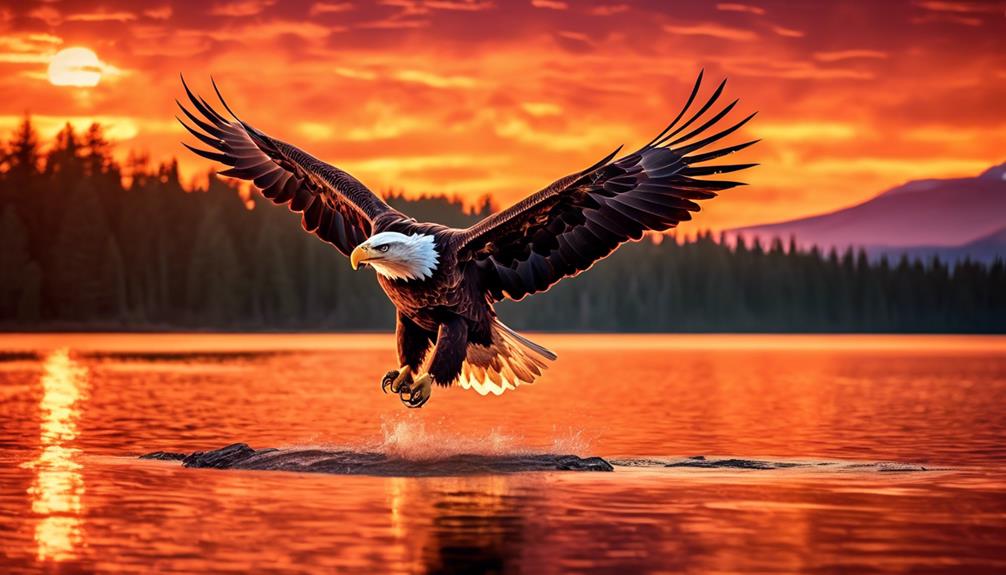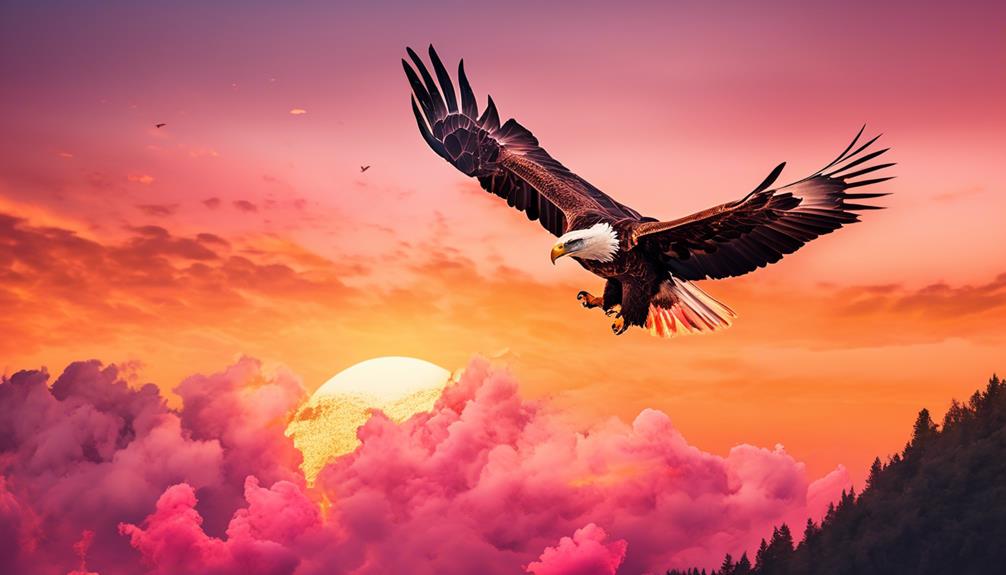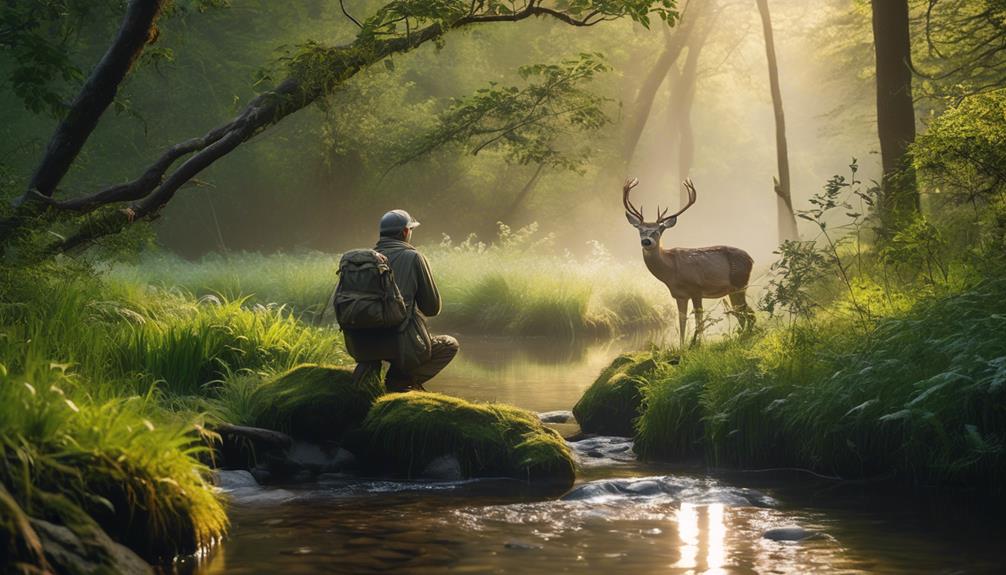Please note this post may contain affiliate links picked by me (Jay) that I have deemed may be of interest or relevant to you the reader of this.
These links do not affect the cost of the thing if you decide to purchase but i may get a little money if you choose to purchase.
For more information on my affiliate link policy click here.
As I stood there, camera in hand, surrounded by the breathtaking beauty of the natural world, I couldn't help but feel a surge of inspiration. Wildlife photography has a way of captivating our hearts and igniting our passion for the wild.
Whether you're just starting out on this incredible journey or looking to take your skills to the next level, there's always something new to learn and explore. In this discussion, we'll delve into the essential tips and techniques that will kickstart your wildlife photography adventure, allowing you to capture those awe-inspiring moments that will leave you and your viewers in awe.
So, grab your camera, pack your curiosity, and let's embark on this inspiring journey together.
Key Takeaways
- Master camera settings: aperture, shutter speed, and ISO.
- Choose the right equipment: camera body, telephoto lens, and tripod.
- Use light creatively to add depth and drama to your photographs.
- Understand the art of wildlife composition.
Understanding the Wildlife Photography Basics
As a beginner wildlife photographer, understanding the basics is essential to capture stunning images of the magnificent creatures that inhabit our planet. Mastering camera settings and choosing the right equipment are two key factors that can make a significant difference in the quality of your wildlife photography.
When it comes to mastering camera settings, it's important to familiarize yourself with the different modes and functions of your camera. Experiment with aperture, shutter speed, and ISO to achieve the desired effect in your photographs. Understanding how these settings work together will allow you to capture the perfect shot, whether it's freezing the motion of a running cheetah or creating a beautiful bokeh effect.
Choosing the right equipment is equally important. Invest in a camera body that suits your needs and budget. Consider factors such as resolution, autofocus capabilities, and low-light performance. Additionally, a telephoto lens with a long focal length will enable you to get up close and personal with your subjects, while a sturdy tripod will ensure stability and minimize camera shake.
Exploring Unique Wildlife Photography Techniques
Now that we've a solid foundation in the basics of wildlife photography, let's embark on an exciting journey of exploring unique techniques that will take our images to the next level. One of the most powerful tools at our disposal is light. By using light creatively, we can add depth, drama, and emotion to our wildlife photographs.
One technique to consider is backlighting. This involves positioning yourself so that the light is coming from behind your subject. This can create a stunning halo effect, highlighting the edges of your subject and creating a sense of ethereality. Experiment with different angles and see how the light interacts with the subject.
Another technique is to capture movement in your wildlife photography. Freeze the motion by using a fast shutter speed to capture the split-second action of a bird taking flight or a cheetah sprinting across the savannah. Alternatively, use a slower shutter speed to create a sense of motion blur, showcasing the graceful movement of a bird in flight or the flowing mane of a running horse.
Finding Inspiration in Nature's Beauty
Nature's beauty is a boundless source of inspiration, captivating and enchanting all who take the time to appreciate it. When I immerse myself in the wonders of the natural world, I'm filled with a sense of awe and wonder. It's in these moments that I truly connect with wildlife, finding hidden gems in nature that ignite a spark of creativity within me.
To evoke an emotional response in you, the audience, I want to share two sub-lists that highlight the power and beauty of nature:
- The Symphony of Colors:
- Vibrant sunsets that paint the sky in hues of orange, pink, and purple.
- The delicate petals of a flower, each one a masterpiece of design and color.
- The Dance of Life:
- The graceful flight of a bird, soaring through the air with effortless elegance.
- The playful antics of a baby animal, a reminder of the joy and innocence in the world.
These moments in nature inspire me to capture the essence of wildlife through my lens. They push me to explore new techniques and perspectives, constantly seeking innovation in my photography. By connecting with wildlife and discovering hidden gems in nature, I'm able to create images that not only showcase the beauty of the natural world but also evoke a sense of wonder and appreciation in others.
Capturing the Essence of Wildlife in Your Photos
Immersing oneself in the wonders of nature's beauty not only inspires a sense of awe and wonder, but also presents an incredible opportunity to capture the essence of wildlife in mesmerizing photographs.
Wildlife photography isn't just about taking pictures of animals; it's about capturing their true spirit and telling their stories through images.
To capture the essence of wildlife in your photos, it's essential to understand the art of wildlife composition. This involves carefully framing your shot, considering the placement of the subject within the frame, and utilizing techniques such as leading lines and the rule of thirds to create visually appealing and dynamic images.
Experiment with different angles and perspectives to add depth and dimension to your photographs.
In addition to composition, wildlife storytelling is another crucial aspect of capturing the essence of wildlife. Your photos shouldn't only showcase the beauty of the animals but also tell a story and evoke emotions in the viewer.
Look for moments of interaction, behavior, or unique characteristics that can help convey the story of the animal. A close-up of a lion's intense gaze or a herd of elephants in the midst of a playful mud bath can speak volumes about the wildlife you encounter.
Developing Your Creative Eye for Wildlife Photography
To truly excel in wildlife photography, one must continuously work on developing their creative eye, allowing them to capture unique and captivating moments in the natural world. Enhancing composition skills is key in creating compelling wildlife photographs. By understanding the rule of thirds, leading lines, and using framing techniques, you can create visually pleasing and dynamic compositions that draw the viewer's eye into the scene. Experimenting with different angles and perspectives can also add depth and interest to your images.
Mastering lighting techniques is another crucial aspect of wildlife photography. The right lighting can make or break a photograph. By learning to harness natural light and understanding how it interacts with your subject, you can create stunning images with beautiful textures and colors. Golden hour, when the sun is low on the horizon, provides warm and soft light that can enhance the mood of your wildlife photographs. Backlighting can create a magical effect, while sidelighting can add depth and dimension to your subjects.
Developing your creative eye for wildlife photography requires practice, experimentation, and a willingness to push boundaries. It's about capturing the essence of the natural world in a way that engages and inspires the viewer. So, go out there, enhance your composition skills, master lighting techniques, and let your creativity soar as you capture the breathtaking beauty of wildlife through your lens.
Frequently Asked Questions
What Type of Camera Equipment Is Best for Wildlife Photography?
For wildlife photography, the best camera equipment depends on your specific needs and budget.
Camera lens options are crucial, such as telephoto lenses with a long focal length to capture animals from a distance.
Essential wildlife accessories include a sturdy tripod to keep your camera steady and a camouflage cover to blend in with the surroundings.
These tools will help you capture stunning shots of animals in their natural habitat, allowing you to showcase their beauty and uniqueness.
How Do I Approach and Interact With Wildlife Without Disturbing Them?
How can we approach and interact with wildlife without disturbing them?
It's all about using the right techniques and showing respect for their habitat. By moving slowly and quietly, we can blend into the surroundings and observe without causing alarm.
It's important to be patient and let the animals come to us, rather than chasing after them. With a mindful approach, we can capture incredible moments in wildlife photography without disrupting the natural balance.
Are There Any Ethical Considerations or Guidelines When Photographing Wildlife?
When photographing wildlife, it's crucial to consider the ethical implications and guidelines to ensure wildlife conservation and responsible photography. Respecting the animals and their habitats is paramount.
It's essential to maintain a safe distance, use telephoto lenses, and avoid disturbing their natural behavior. Additionally, always follow local regulations and guidelines set by wildlife organizations.
What Are Some Tips for Capturing Fast-Moving Animals in Action Shots?
When capturing fast-moving animals in action shots, it's all about being in the moment. You have to track their movements like a skilled hunter, anticipating their every leap and turn.
With the right tracking techniques and quick reflexes, you can freeze their majestic grace in a single frame. Adjusting your shutter speed settings is crucial, allowing you to capture every detail of their swift motion.
It's a thrilling challenge that pushes the boundaries of wildlife photography.
How Can I Effectively Edit and Post-Process My Wildlife Photos to Enhance Their Quality?
When it comes to enhancing the quality of my wildlife photos, I've found that effective editing techniques and post-processing software can make a world of difference.
By using software like Lightroom or Photoshop, I can adjust the exposure, color balance, and sharpness of my images, bringing out the finest details and creating stunning visuals.
These tools allow me to unleash my creativity and transform ordinary shots into extraordinary masterpieces that truly capture the beauty of wildlife.
Conclusion
In conclusion, wildlife photography is a thrilling and awe-inspiring journey that allows us to connect with the natural world in a profound way.
By understanding the basics, exploring unique techniques, and finding inspiration in nature's beauty, we can capture the essence of wildlife and create breathtaking images.
So grab your camera, immerse yourself in the wilderness, and let your creative eye soar like a majestic eagle, capturing moments that will leave you breathless.
Let the wild adventure begin!


